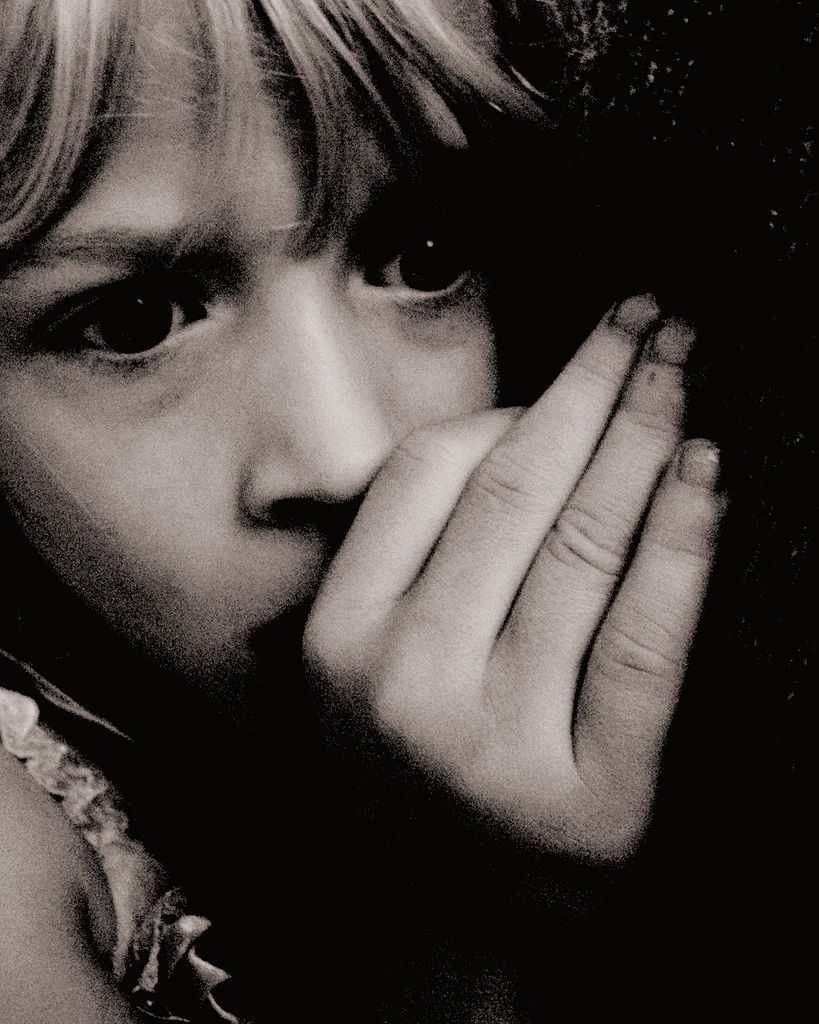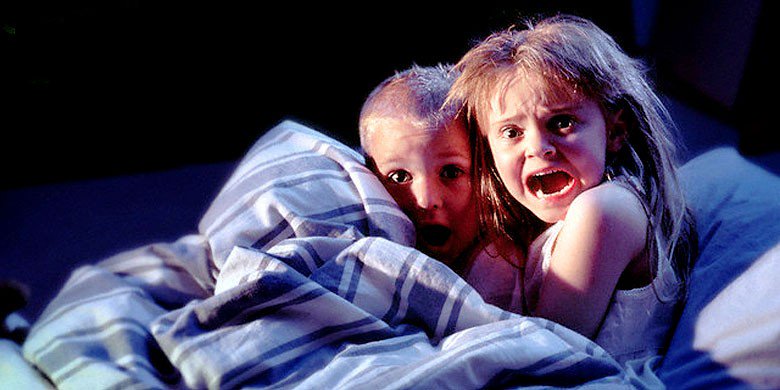Trypophobia in Children

Children can suffer from trypophobia
A 12-year-old girl from Chile was brought by her mother consulting the psychiatrist about her feelings of discomfort, abdominal pain and nausea. When trying to determine the origin of neurovegetative symptoms such as increased heart and breathing rate, she described experiencing the intense feeling of fear while looking at slices of bread with seeds, different kinds of cheese and polka dots or animal print clothes.
The mother reported that during one of her panic attacks; the girl ran out of the bathroom seeing the perforated concrete walls. Even though she has never experienced fear of bees, she was terrified and weeping when expose to a picture of a honeycomb. At first, the psychiatrist attributed her panic attacks with her parents getting a divorce, but after a short period, it was clear that something else was causing her to feel discomfort, anxiety, and fear. After being asked “How would you draw your fear”, she would draw a cluster of holes. She was experiencing Trypophobia.
Children’s Anxiety Disorders and Phobias
Everyone, from the youngest child to the oldest adult, has experienced different kinds of anxieties and fears. With children, such feelings can be just a part of the maturing process. Dealing with anxiety prepares youngsters to handle the unsettling experiences and challenging life situations. However, when this feeling persists, anxiety develop into phobias which can be extreme and severe. As much as a parent hopes the child will grow out of it, some phobias, which occur in about 5 percent of children, can lead to other disorders and compromise some everyday activities such as going to the park, reading books with pictures of phobia triggers, and playing outside with other children.
Phobias can develop at every stage of life and can be really difficult to tolerate, especially if the stimuli are hard to avoid. (like thunderstorms, dogs, bugs etc.) For some children with the dog phobia, bee or bug phobia it’s difficult to take part in outdoor sports, walk to school, go camping or have overnight sleepovers. For the girl from Chile, an everyday activity such as having a bath was difficult to perform due to the Trypophobia stimuli surrounding her due to the unnerving look of bubbles. Having breakfast while her parents or siblings were eating seed bread or cheese caused the feeling of nausea, increased heart, and breathing rate. Many children experience the same fears and continue to battle them even as adults.
The consequences of phobias are not experienced just by the patients, but also by the people surrounding them. The phobias seem to have family roots, so some children often have a parent, grandparent, uncle or aunt that have similar fears. To alleviate stress factors, parents need to make certain adjustments and seek outside help, such as a counselor or psychiatrist.
The Causes and Symptoms in Children
Scientists agree that the main difference between a normal fear and a phobia is in the intensity of anxiety symptoms and the length of time symptoms of discomfort persist. Sometimes parents can unwittingly reinforce the phobia by avoiding the triggers or being overly attentive. If a child has a phobia, he experiences this level of fear for a period of six months or more. Some common phobias in children include:
- animals
- blood
- the dark
- enclosed spaces
- flying
- getting sick
- having a parent, sibling, or pet get sick or hurt
- heights
- insects and spiders
- needles (“getting shots” at the doctor’s office)
- thunder and lightning
Even though Trypophobia has not officially been accepted by the Diagnostic and Statistical Manual of Mental Disorders, there are proven records of people suffering from this kind of phobia, including children. The extreme fear of cluster of holes which Trypophobes put up with can cause panic disorders in such physical symptoms as sweating, shaking, chest pain, abdominal pain, feeling dizzy, increased heart rate, shortness of breath, chills or hot flashes etc. One of the people identified the Trypophobia stimuli “What got me Trypophobia as a young child” by stating that “The trigger was apparently called barnacles. My family would always go to the south of France on vacation. When visiting the beaches, these would always be plastered to the rocks. I remember crying because of them a couple of times, I could never really look at them, I had nightmares about them. Nobody understood it when I said they were scary and they just walked over them with bare feet.”

See your doctor if you think your child has Trypophobia
Besides barnacles, some other common Trypophobia triggers include lotus pods, mango worms, sponges, honeycombs, cheese, the cluster of holes in food or on human or animal skin etc. A study report “ Is Trypophobia a Phobia” published by Can, Zhouran and Zheng showed that in the past 10 years, thousands of people have claimed to have this kind of phobia. They adapted a Preschool Single Category Implicit Association Test to use with preschool children to research the possible causes and stimuli. The children were asked to categorize images of snakes, sea stars, and holes, reporting a negative valence towards these images and venomous animal photos, and a neutral attitude towards venomous animals without Trypophobic patterns. The test could not show precise results about the origin of this phobia; however, they pointed out that “the discomfort felt toward Trypophobic images might be an instinctive response to their visual characteristics rather than the result of a learned but nonconscious association with venomous animals.”
On the other hand, a case report published as a result of joint cooperation of the scientist from Chile and United Kingdom, J. Martinez-Aguayo, R. Lanfranco, M. Arancibia, E. Sepulveda and E. Madrid, has given some insights on how to recognize and cope with Trypophobia stimuli in children. Intense fear towards holes and repetitive patterns accompanied by severe neurovegetative symptoms was diagnosed to a young girl who was, at first sight, experiencing symptoms of GED (Generalized Anxiety Disorder). Her mother has suffered from the GED and developed three depressive episodes while going through a divorce from the girl’s father. At first, the girl could not explain the situation or her reactions.
When her mother started reporting the trigger situations, the psychiatrist was able to track down the symptoms and treat the causes. While she was only 4 years old, she showed disgust towards some kinds of food such as bread with holes, noodle soup, raspberry juice, and strawberries. She avoided food which could cause the feeling of granules on her tongue and developed a strong feeling of disgust. The fear amplified over time. After finishing the treatment with sertraline and encompassing the techniques of desensitization and cognitive behavioral therapy, she experienced only the feeling of disgust towards Trypophobic stimuli. The scientists concluded that this study “provides a framework to understand how a natural response of discomfort found in both clinical and healthy populations can become a specific phobia with all what a specific phobia usually entails.”
Help Your Child Cope With Trypophobia
Rather than exposing the children to trigger objects and waiting for the fear to burn itself out, parents need to make special adjustments and construct a list of fear-provoking situations. Therapists emphasize that the secret to the long-term effects of treatments are parents who encourage their children to cope with their fears.

Children with Trypophobia
Some of the things you can do to help your children cope with the phobia are:
- Never belittle the fear even though it seems trivial or ridiculous, that won’t make the fear go away.
- Talk about it. Words can make the feeling of anxiety and distress power out.
- Provide support and care, but do not avoid the trigger intentionally.
- Teach your children to rate fear. On a scale of 1 to 10, encourage your child to visualize the intensity and the fear will look less intense than first imagined.
- Introduce and use your imagination while creating special coping strategies. With the sentences such as “I can do this”, or “I’ll be OK“, they are learning the power of positive statements. Introduce special relaxation techniques and visualizations of your children’s favorite things like floating on a cloud in cartoons, riding a bike, swimming, playing sports etc.
As the child grows, it is also important to adjust these techniques in accordance with their age. Toddlers love toys and books with pictures. Teach them to relax using the things which they are familiar with, to keep the panic under control. Panic in the school-aged children can be harshly judged by others, so children sometimes get to be mocked and laughed at. However, you can encourage them to visualize the thoughts which cause the symptoms and put them into a box under a lock. Empower them to face the thoughts rather than to ignore them. When it comes to teenagers, keep the communication as open as possible. Some teens will try to hide their fears, trying to become more independent. While learning to face their fears, they will be better at coping with life’s situations.
References
https://ph.theasianparent.com/child-trypophobia-take-look-photos-find/”>https://ph.theasianparent.com/child-trypophobia-take-look-photos-find/
http://www.chop.edu/conditions-diseases/phobias-children-and-adolescents
http://www.apa.org/monitor/julaug05/fighting.aspx”>http://www.apa.org/monitor/julaug05/fighting.aspx
https://www.frontiersin.org/articles/10.3389/fpsyt.2018.00015/full”>https://www.frontiersin.org/articles/10.3389/fpsyt.2018.00015/full
https://www.ncbi.nlm.nih.gov/pubmed/28558623″>https://www.ncbi.nlm.nih.gov/pubmed/28558623
http://www.childrenshospital.org/conditions-and-treatments/conditions/phobias/symptoms-and-causes

